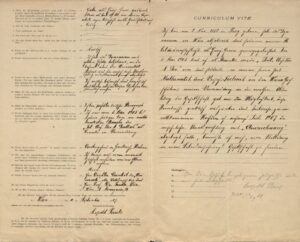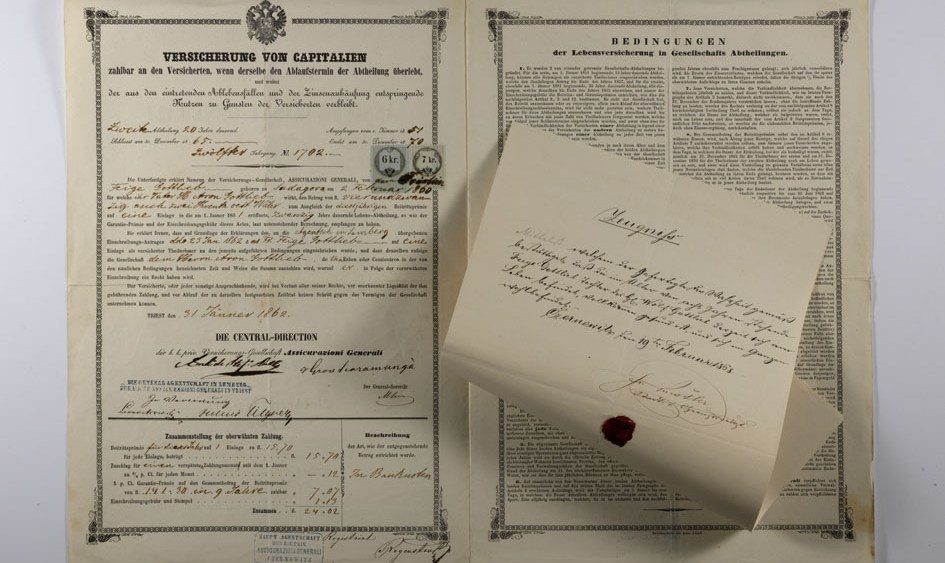Exploring old handwriting. When German Gothic was written at Generali
01 September 2017
In an archive with a Middle European character, German Gothic documents are a must.
The minutes of top corporate management bodies of 1835 testify to the contrast between the first Generali chairman, Giovanni Cristoforo Ritter de Záhony from Frankfurt, and legal consultant Giovanni Battista de Rosmini, who was to head the group until 1847. The clash also took place at the linguistic level, with the use of German in the so-called Kurrentschrift, the cursive form of German Gothic writing (Fraktur), thus in total contrast with the Italian that was always used in management minutes.
Introduced in the 16th century and used until the first half of the 20th century, this handwriting spread in all countries under Austrian or German influence, and although it had been established since 1831 that the language of Generali’s official deeds was Italian, it is very present in the administrative documentation held in the Archive.
Not always making for easy reading, especially in older documents, Kurrentschrift turns out to be generally more regular and simpler in papers of the late 19th century and up to the years of the First World War.
The Central Secretariat‘s volumes contain the correspondence between the Trieste Management and the various agencies in the territories of the Empire, attesting once more how German, in this particular layout, was the lingua franca in use from Austria-Hungary to Galicia, Bucovina and Germany. The offices in Trieste, Vienna, Hamburg, Leipzig, Graz, Budapest, Prague, Bratislava, Krakow, Lviv, Czernowitz, Zagreb and Belgrade, to cite the most important, are thus affected and united with each other. Documentation from the agencies of the Empire is also present in the Personnel Service fonds, together with the individual positions of individual employees (we recall those of two illustrious writers: Franz Kafka and Leopold Perutz), as well as in the remarkable collection of policies that the Historical Archive conserves and which illustrates some aspects of the activities of the life, transportation and fire insurance branches.




